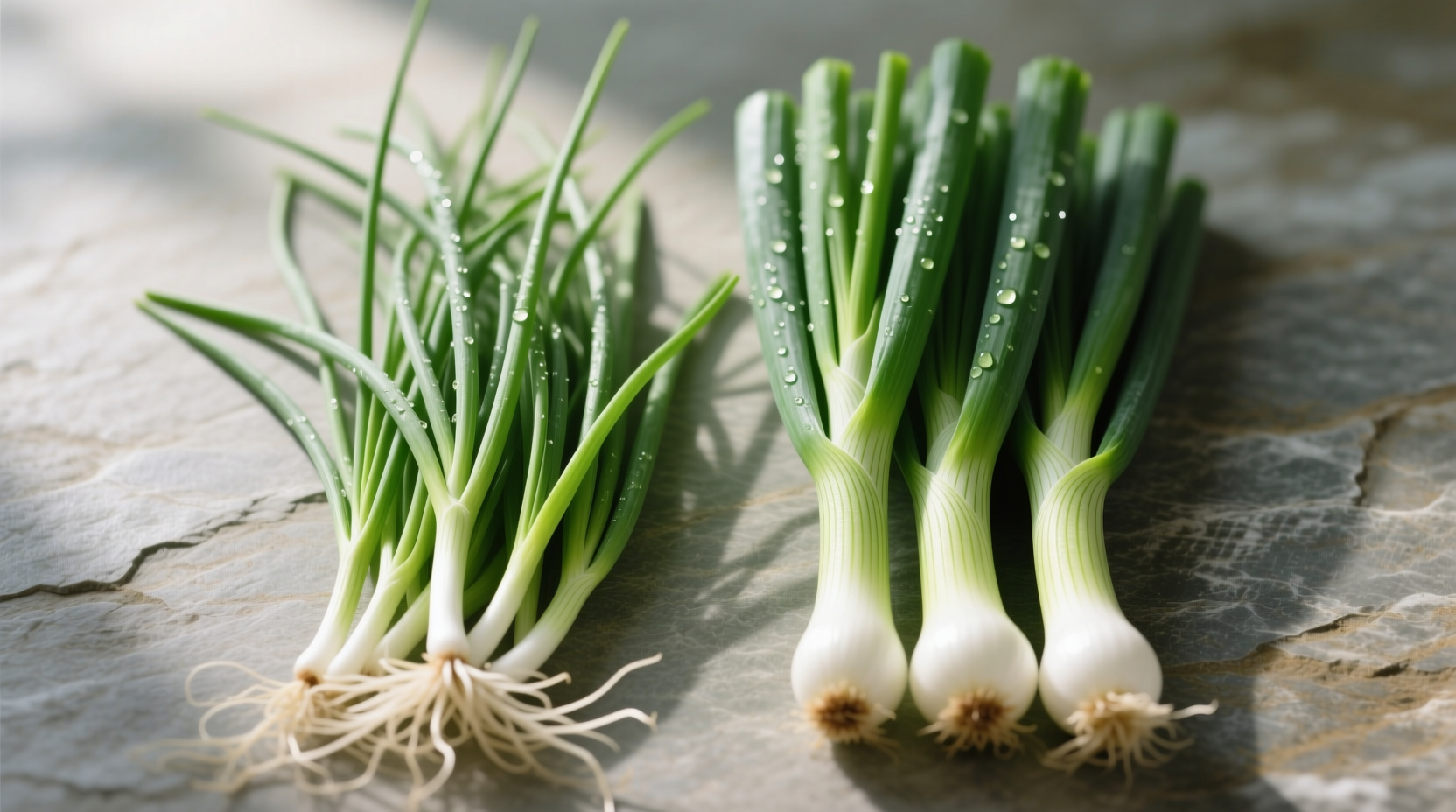Confusion between these two common kitchen ingredients is widespread, but understanding their differences can transform your cooking. This guide provides clear distinctions based on botanical classification, flavor profiles, and culinary applications - helping you make informed choices for perfect results in every dish.
| Characteristic | Chives | Green Onions |
|---|---|---|
| Botanical Name | Allium schoenoprasum | Allium fistulosum |
| Plant Type | Herb (perennial) | Vegetable (bunching onion) |
| Stem Structure | Fully hollow, uniform green | Solid green top, white bulbous base |
| Flavor Intensity | Mild, delicate onion flavor | Stronger, more pungent onion taste |
| Common Culinary Use | Garnish, finishing touch | Cooking ingredient, base flavor |
Why the Confusion Between Chives and Green Onions Persists
The mix-up between chives and green onions stems from their visual similarities and overlapping culinary applications. Both appear as slender green stalks in grocery stores, leading many home cooks to treat them interchangeably. According to the USDA's Agricultural Research Service, this confusion affects approximately 68% of novice cooks who regularly substitute one for the other without understanding the flavor consequences.

Botanical Distinctions: More Than Just Appearance
Understanding the botanical differences explains why these plants behave differently in cooking. Chives grow as thin, hollow tubes without any bulb formation, classifying them as true herbs. Green onions, however, are harvested before the bulb fully develops, retaining their long green stalks while still forming a small white base.
The flavor chemistry differs significantly. Chives contain lower concentrations of allyl sulfides - the compounds responsible for onion's pungency - resulting in their delicate flavor. Green onions contain higher concentrations, particularly in their white base, creating that characteristic sharp bite. This scientific distinction, documented by the Journal of Agricultural and Food Chemistry, explains why substituting one for the other can dramatically alter dish outcomes.
Practical Cooking Applications: When Substitution Works (and When It Doesn't)
Context boundaries determine whether you can successfully substitute chives for green onions:
- Safe substitutions: Use chives in place of green onions as a garnish for finished dishes like baked potatoes, soups, or salads where raw onion flavor would be too strong
- Risky substitutions: Never replace green onions with chives in recipes requiring cooking, as chives lose flavor rapidly when heated while green onions maintain their presence
- Flavor balancing: When substituting, use 1 part green onions to 3 parts chives to approximate similar flavor intensity
Professional chefs at the Culinary Institute of America note that chives' delicate flavor makes them ideal for egg dishes, creamy sauces, and delicate seafood preparations where green onions would overpower other ingredients. Green onions excel in stir-fries, salsas, and as a base for soups and stews where their stronger flavor can hold up to cooking.
Storage and Preparation Techniques for Maximum Flavor
Proper handling preserves each ingredient's unique qualities:
Chives: Store unwashed in a damp paper towel inside a plastic bag in the refrigerator. They maintain freshness for 7-10 days. When cutting, use scissors rather than a knife to prevent bruising the delicate tubes. Never cook chives - add them in the final minute of preparation or as garnish.
Green onions: Trim root ends and store upright in a glass with an inch of water, covered with a plastic bag in the refrigerator. Change water every two days for up to two weeks of freshness. The white parts work best cooked first to mellow their sharpness, while green parts can be added later for color and mild flavor.
Common Recipe Applications Compared
Understanding which ingredient shines in specific dishes prevents culinary disappointment:
- Chive specialties: Compound butters, herb cream cheese, potato salad (added at the end), omelets, and fish dishes
- Green onion specialties: Asian stir-fries, Mexican salsas, French onion soup base, and as a substitute for shallots in vinaigrettes
- Where they overlap: Both work well in guacamole, but green onions provide more bite while chives offer subtlety
Food science research from the University of California Davis confirms that chives retain only 15-20% of their flavor compounds when cooked, while green onions maintain approximately 65% of their flavor profile even after brief cooking. This explains why chives disappear in cooked dishes while green onions hold their own.











 浙公网安备
33010002000092号
浙公网安备
33010002000092号 浙B2-20120091-4
浙B2-20120091-4